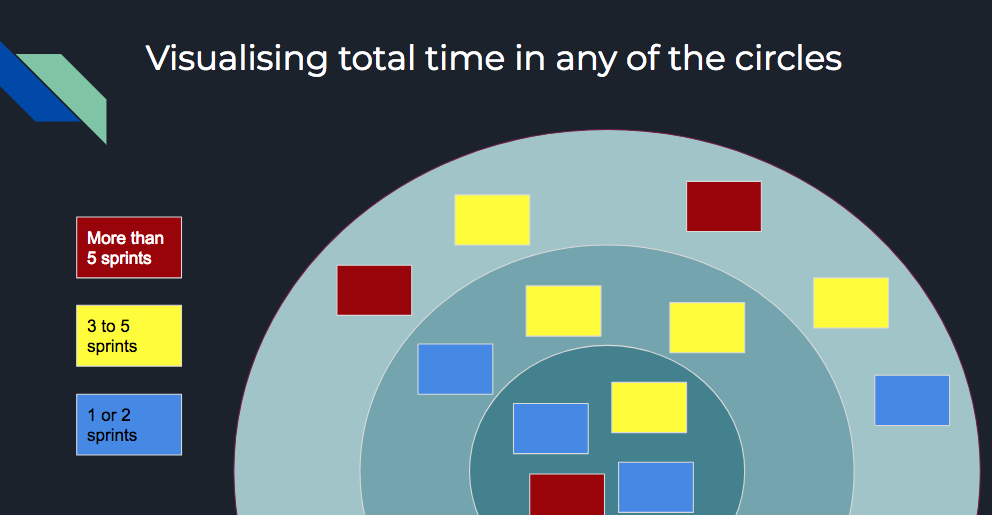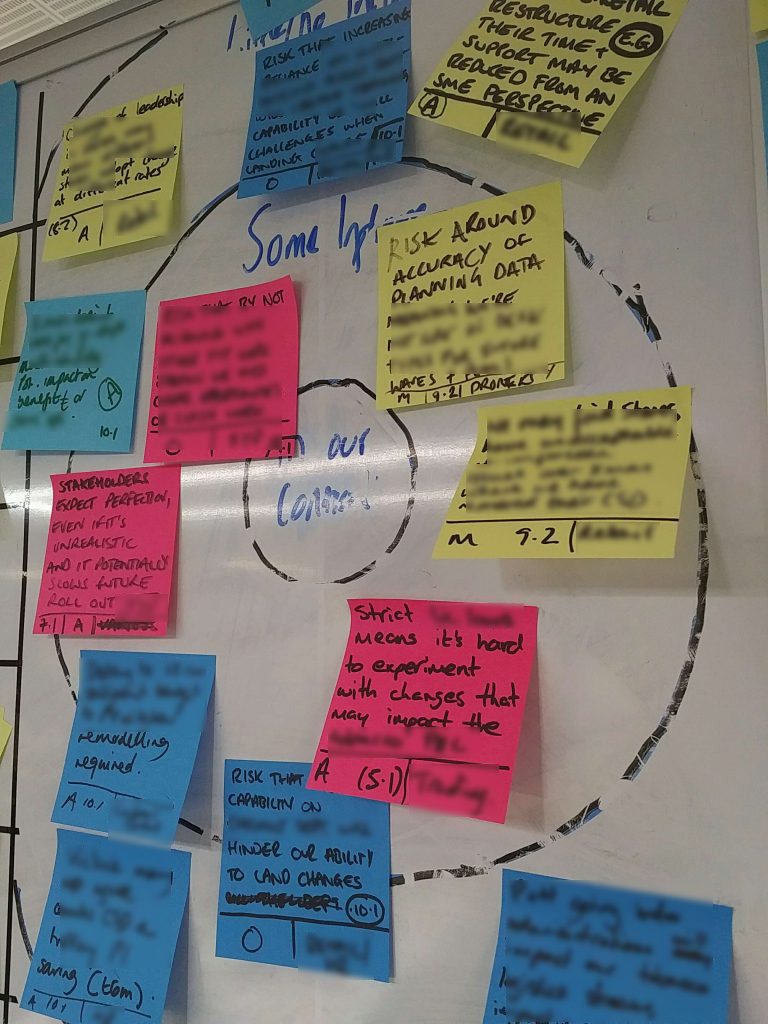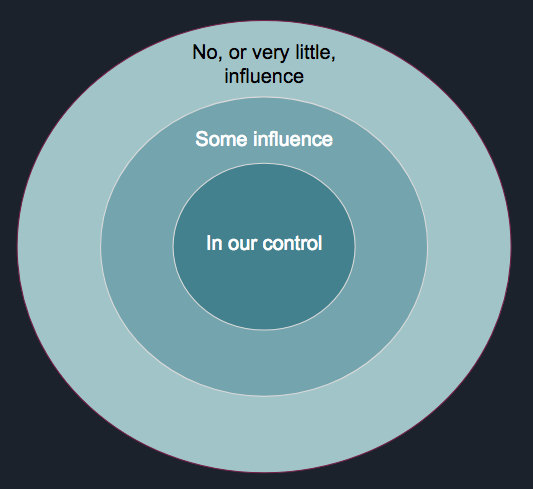The problem
Teams often find it hard to capture and visualise risks and issues in a way which allows the team, their stakeholders and leaders to clearly understand who needs to provide help.
The team’s goals will be threatened if captured risks and issues are inaccessible and hard to decipher.
The solution
To help teams communicate with stakeholders and leaders where the team needs specific help, I’ve created a technique called Circles of Influence & Control.
The technique uses visual management to show the degree of influence and control the team has over each risk or issue. Stakeholders and leaders can easily see where the team needs support.
It also encourages the team to understand what they have control over and immediately take steps to resolve the risk or issue.
This technique is inspired by an approach by Stephen Covey described in his classic book The 7 Habits of Highly Effective People.
Instructions
Setup
- Draw three concentric circles
- Label the inner circle “In our control”
- Label the middle circle “Some influence”
- Label the outer circle “No, or very little, influence
POPULATING
Using post-it notes, the team should add risks, issues, blockers into the appropriate circles
Actions and responsibilities
The team should plan how to resolve, own, accept, mitigate or escalate each item. This should be done with the appropriate stakeholders and leaders so they know how to help the team.
Once populated the team should focus energy on the inner circle of items since they have control of those items. The team should also focus attention on the middle circle of items since they have a degree of influence.
The sponsors, stakeholders and the leadership team should pay particular focus on the outer circle since these are items the team have little or no influence to address.
Tips
- Team members can update these circles at any time
- The team can review, manage and escalate items on a regular basis
- Different colour post-it notes can be used to denote how long items have been present

Example



